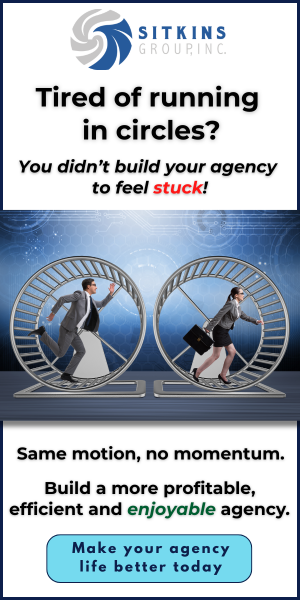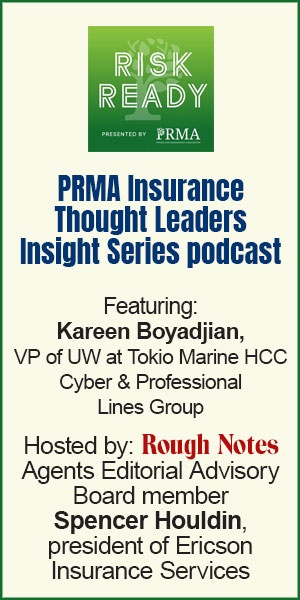How to prepare property and lower
insurance costs against severe storms
By Jeff Zehr
Severe convective storms (SCS) have become a big risk factor for the insurance industry. These major weather events, also known as thunderstorms, can include lightning, torrential rain, tornadoes, straight-line winds and hail.
As agents and brokers communicate with clients and potential clients, it is imperative that they stress how destructive these weather occurrences can be. Organizations should do everything possible to make sure they fully prepare their buildings for these weather events.
According to a January 2025 article in Risk & Insurance, in 2024, global catastrophes generated $154 billion in insured losses—and 41% of those losses were caused by severe convective storms. Amid a volatile insurance environment, organizations should be ready to show insurance companies why they represent a good risk—and one an insurer would want to take on even when severe convective storms lead such large amounts of losses.
The importance of predictive modeling
Insurance companies across the United States use both predictive modeling and historic SCS losses from the insurance applicants’ regions to assess their risk. This is not a one-time action, but rather an ongoing process to accurately keep up with weather patterns. The actuaries at each company want to make sure they are appropriately funding each state’s expected losses so they can fine-tune individual rate levels.
Factors such as climate trends, seasonality and meteorological indicators can all play into the likelihood of a particular insured experiencing major damage. Just because a certain meteorological trend was occurring a year or two ago, doesn’t mean it will continue acting in the same way.
One example of this is the prevalence of hail in the Midwest, according to Verisk research. While hailstorms have historically been limited to the spring and summer months, they have recently been occurring earlier in the year. Additionally, they are also affecting more states outside “hail alley” in the Midwest, such as several in the eastern part of the country. These aberrations can throw off predictive modeling.
[I]n 2024,
global catastrophes
generated $154 billion
in insured losses—
and 41% of those losses
were caused by severe convective storms.
Effects on different types of structures
When insurance companies are assessing individual risk for SCS, one of the major factors is the type of property. Certain buildings, such as those with steep rooflines, are particularly at risk. The steep roofline leads to a greater surface area, which in turn can make it more vulnerable to hail and wind.
Another major risk factor is the number of windows on the building. The more windows an organization has in its buildings, the more likely those windows are to be broken by either high winds or hail.
Insurance policy as a maintenance plan
Agents and brokers are likely to encounter a number of customers who view a property insurance policy as a maintenance plan rather than a financial safeguard against catastrophe. Instead of properly caring for their buildings, these organizations may wait for a storm to come through, and then assume they will make the needed repairs with the help of their insurance company.
As insurance companies evaluate coverage for potential customers or review coverage for existing customers, they are looking for signs that organizations will keep their buildings in good shape. If they don’t, insuring them means much more risk for the insurance company—not to mention disruption for the organization.
Ultimately, higher risk can lead to higher premiums, higher deductibles, revised terms or even non-renewal of the organization’s insurance policy.
Risk mitigation
Instead of waiting for a severe convective storm to cause damage and a claim to be made, organizations should be thinking proactively even before they seek quotes for an insurance policy. This tactic allows them to “tell their story” in an insurance application or renewal conversation.
As their agent or broker, you can offer advice as to the best ways for them to show why they are a good risk. Those ways include:
- Providing records of building maintenance. Underwriters like to see when an organization has made building improvements such as a new roof, windows and plumbing. It’s also helpful to have a capital expenditure plan, which shows that the organization is ready and willing to lower its risk.
- Showing steps the organization has taken to handle preventive maintenance. In the specific case of the roof, for instance, clients will want to show that they have been:
- Scheduling annual, professional roof inspections.
- Checking for loose or missing shingles.
- Inspecting flashing around chimneys, vents and skylights to prevent water intrusion.
- Reinforcing the roof’s structural integrity by adding metal connectors to the rafters.
- Regularly cleaning gutters and downspouts.
- Trimming overhanging trees so they are less likely to fall onto the roof during a storm.
- Ensuring good attic ventilation to prevent the formation of ice dams.
- Protecting roof mounted equipment with hail guards.
- Using the right roofing materials to improve their risk profile. The materials that have proven the most resistant to hail include low-slope ballasts (large stones), single-ply membranes and built-up roofs with loose-laid gravel.
- Watching for roof deteriorations. Such deteriorations include roof blisters, open laps, seams splitting, wrinkles, surface erosion, brittleness, ponding, weathering, contraction and tenting. Develop a process to address deterioration upon discovery.
- Providing a minimum of four years of loss information. When insurance companies are considering a new policy, they use historical facts to predict the future. They want to know about both open and closed claims. If large losses have resulted from locations that are no longer on the schedule or locations that have been improved, organizations should be sure to provide this supporting detail.
- Offering information on how landscaping was used to guard against loss. Some of the most important ways they can do this include:
- Avoiding planting trees close to the facility to prevent root damage to the foundation and flying branches.
- Diverting water away from the foundation to keep water from infiltrating it.
- Planting trees and shrubs that have strong root systems to help anchor soil and prevent erosion.
- Pruning trees that are close to the building so they are less likely to cause damage during high winds.
- Using solid fencing materials to withstand high winds.
- Inspecting landscaping on a regular basis to identify any issues.
Research and predictive modeling have shown that severe convective storms will continue to be a challenge—especially in certain areas of the country. This could lead to more costly insurance policies.
But organizations are not helpless; as their agent, you can help your insureds tell their story, showing that they are a good risk. That will almost certainly pay off in the end. For more severe convective storm resources and best practices, visit churchmutual.com/severe-storms for additional insights and detailed information.

The author
Jeff Zehr joined Church Mutual Insurance Company in 2024, with nearly 25 years of underwriting leadership experience. He previously served as vice president–commercial segment leader for a major national insurance carrier and two other multinational carriers.






